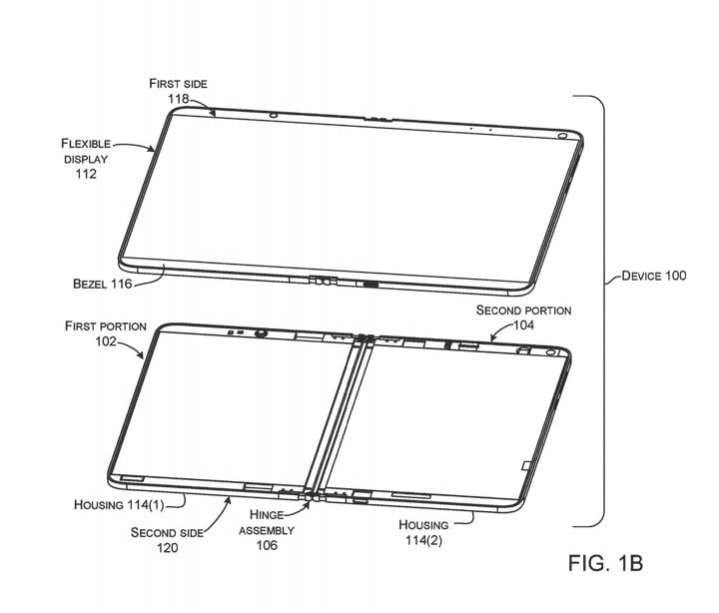
Early prototypes of Microsoft’s secretive but highly anticipated Project Andromeda computer project revealed a device with two screens that can fold on a center hinge, similar to a book. However, rather than utilizing two separate displays, Microsoft’s latest take at a new computing form factor utilizes a single flexible display, according to a newly published patent application.
Microsoft created a new hinge design to allow the flexible panel to fold and unfold without being damaged. The hinge is also designed to prevent crimping and to support the display when the device is opened like a book. Otherwise, the display area near the hinge may feel mushy when users are utilizing the touchscreen. In this case, the role of the hinge is to provide support in order to deliver a similar tactile feel throughout the display, no matter where the user is touching the touchscreen.
“The hinge assembly can provide several features that facilitate the use of a single flexible display,” Microsoft said in the patent application that it filed with the United States Patent and Trademark Office (USPTO) and published on October 11. “First, the hinge assembly can change lengths during rotation of the first and second portion to reduce stresses imparted on the flexible display. Second, the hinge assembly can maintain a minimum bend radius for the flexible display during rotation to protect the flexible display from damage (e.g., crimping). Third, the hinge assembly can support the flexible display when the first and second portions are rotated to a 180-degree “flat” orientation so that user interaction with the flexible display over the hinge assembly is the same or similar to interactions with other areas of the flexible display (e.g., similar tactile feel).”
Unlike the original Andromeda concepts, the single flexible screen design means that the screen will not be able to rotate 360 degrees. This means that you can’t close the hinge in a way so that the screens would face outwards.
Various materials could be utilized in the hinge assemblies, including metals, plastics, foams, polymers, and composites. And Microsoft claims that this hinge could be used in a number of devices, including “notebook computers, smart phones, wearable smart devices, tablets, and/or other types of existing, developing, and/or yet to be developed devices.”
Microsoft is no stranger to innovative hinge designs. When the Surface RT and Surface Pro were introduced, those devices became the first on the market to support a kickstand with a hinge located in the middle of the device. The Surface Book introduced the fulcrum hinge that helped to balance the screen, and the Surface Studio came with a zero-gravity hinge that makes it easy to adjust the display so that users can enjoy a comfortable viewing position. Given this history, this new innovative hinge assembly would definitely find a natural home in the Surface family. Even though Microsoft has put the brakes on Project Andromeda for the time being, our hope is that Microsoft will be able to deliver on its Andromeda concept and bring a foldable Surface Phone with this new hinge.


